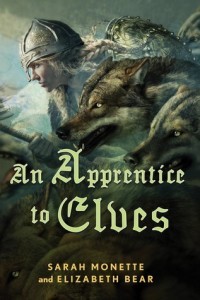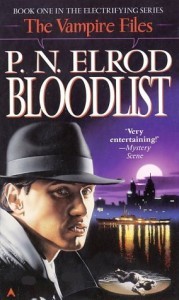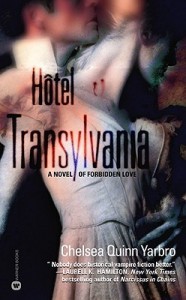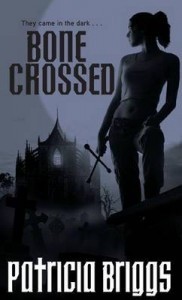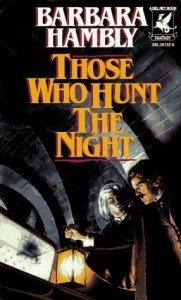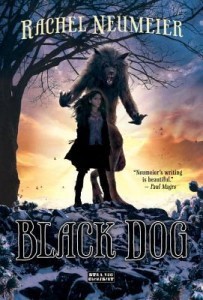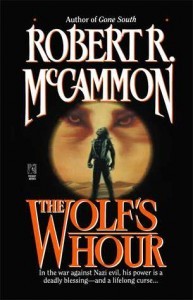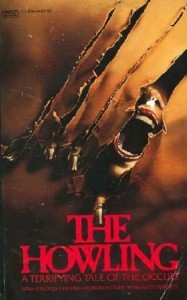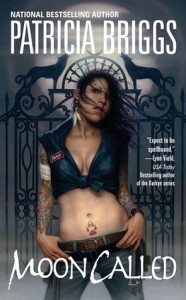Rachel Neumeier's Blog, page 323
October 20, 2015
Recent Reading: The Iskyrne Trilogy, by Sarah Monette and Elizabeth Bear
This really isn’t a trilogy, if we want to be precise. It’s a standalone novel (A Companion to Wolves) followed by a duology (The Tempering of Men and An Apprentice to Elves).
I loved the first book, and it is by far my favorite, but it’s hard to compare to the other two books because it’s so different. It has one pov character and we are kept very tightly in his point of view. This is Njall Gunnarson, who quickly becomes Isolfr Veradechtisbrother. He carries the story, and does a very good job of it, too. On this second reading, I noticed that actually Isolfr is really quite similar to Maia in The Goblin Emperor – the same commitment to duty and desire to do what’s right, and also the same introspective shyness. The world and also the protagonist’s place in the world are very different, but still.
In the second book, the pov widens. We get mainly Skjaldwulf’s point of view, but also Vethulf’s pov. There’s nothing wrong with either man as a pov protagonist – I like them both, in fact, especially Skjaldwulf – but for me they don’t have quite the appeal of Isolfr. And there are two of them, and they go in different directions rather soon, so the plot spreads out and becomes multithreaded and thus the story loses the intimate feel of the first book.
In the third book, now, the viewpoint shifts again and widens still farther, so that we have four important pov characters, none of whom were pov protagonists in the previous book. We also skip forward over a long period, so that most of the book takes place after Isolfr’s daughter Alfgyfa is fifteen or so.
Now, what I really wanted was a story from Otter’s pov. I didn’t necessarily expect this, but I would have loved to see that story.
Let me remind you here that the northlands are being invaded by the Romans (called Rheans, but for all intents and purposes they are Romans), and that in the second book we met Otter as a slave translator for the Rhean army. Otter helped Skjaldwulf escape when he was captured by the Rheans and Skjaldwulf adopted her. So that’s Otter, and I was SO SURE she would bond with a tough-guy male wolf and thus give us yet another twist on gender roles, something this series did a lot of in the first and second books. However, no. This is not that book.
Otter is a pov character, in fact, but a secondary pov character. Her plot thread is touching and actually rather engaging, but not complex or particularly interesting. This is probably because the authors didn’t have time to do a whole lot with her, given what else was going on, but it’s a pity Otter was set into the background.
The primary protagonist in An Apprentice to Elves – perhaps predictably – is Alfgyfa, Isolfr’s daughter, who has become, as you might have guessed, an apprentice to the svartalfar, as arranged back in the first book Most of the third book is spent in Alfgyfa’s pov, though some in the pov of Tin (the mastersmith svartalf to whom Alfgyfa is apprenticed). And we also get to spend some time in the pov of Fargrimr, Randulfr’s brother and a sworn-man …
Okay, now, listen. This is the same problem I had with Elizabeth Bear’s Range of Ghosts trilogy. Tons of great characters pulling the reader’s attention in different directions. I would have liked a 3rd book from Otter’s pov, preferably with her bonding to a wolf, and then a 4th book just from Fargrimr’s pov. I get that if your contact specifies three books you don’t get to spontaneously expand the series to four, but in an ideal world, that’s what I would have wanted.
Fargrimr is, as I said, a sworn-son. When his brother Randulfr bonded with a wolf and was lost as an heir, Fargrimr became an honorary son (instead of a daughter, see) so that she could be her – his – father’s heir and eventually lord in turn. Fargrimr is an excellent point-of-view character. But we don’t see all that much of him, because we are spending so much time with the other pov characters, which means mainly Alfgyfa and also Tin as well as Otter.
To be perfectly honest, I just never really cared all that much for the elves in this series – not the svartalfar and not the aettrynalfar. They’re interesting and all, but my heart was thoroughly captured by the wolves, and by the society formed around them, and by Isolfr, and by the people surrounding him. For me, the elves just couldn’t compete. That was why Alfgyfa wouldn’t have been my first choice to put front-and-center.
To sum up:
A Companion to Wolves — one of my favorite books from the last couple of years. Totally five of five stars. Five plus.
The Tempering of Men — I liked it, but not as much as the first book. Also ended on a cliffhanger, what with the invasion of the Rheans and all. Four stars.
An Apprentice to Elves — I liked it, but not as much as the third book. Four stars. Four minus. But it’s not the book’s fault I had a different story in my head, and your mileage may well vary. And, of course it was absolutely necessary to tie off the story and get everything settled.
Would I read another book in this series? Absolutely. There is plenty of room to go on with this series, and I hope the authors do, preferably in fewer than the seven years it took to get from the first book to the second.

October 19, 2015
Types of vampires
I bet you immediately think of “types of vampires” such as those who drink blood vs psychic vampires who drink something intangible such as “life force,” whatever that is. So did I, when I first thought about this topic! But you know what? That is not an interesting distinction from the perspective of worldbuilding or plotting a story.
It’s also possibly to just categorize vampires as supernatural vs “scientific” — that could be an important difference, since for example your “scientific” vampire may be ridiculously non-science-based, but probably can’t turn into a bat or otherwise contravene the the conservation of mass. But actually, from the standpoint of telling the story, as long as you can tolerate Silly Science Gobbledygook, this doesn’t matter very much either.
If you’re writing a story with vampires, then it’s not what the vampires drink that matters, nor whether they’re envisioned as purely supernatural. It’s what happens to their victims, and also how psychologically similar to an ordinary person the vampires are.
So, forthwith, a selection of Vampire Types in SFF:
Type I Vampire: This vampire only needs to take a little bit of blood. It doesn’t harm his victim, and in fact animal blood is just as good for sustenance as human blood. Psychologically, this vampire has just the same personality after he’s turned as he had before he died. Moreover, there’s no gang or seethe or nest of vampires that he has to deal with. He is, in fact, a Guy With Superpowers, in a sort of vampire shape. It’s easy to cast this kind of vampire as a good guy, but difficult to cast him as a Tormented Hero, because he’s facing no special moral challenges and has no particular reason to feel tormented.
Best example I can think of for this kind of vampire : PN Elrod’s Vampire Files series, first started back in 1990.
This series features Jack, a newspaperman turned vampire in 1930’s Chicago. Jack can turn into a wisp of mist, and he’s superstrong, and of course he’s very difficult to kill. He’s helpless during the day, and he has to drink blood, but just a tiny bit and it can be animal blood.
I rather liked this series, which I suppose today would be seen as falling smack dab in the middle of UF. It isn’t a super-fast-paced or exciting series . . . I would kind of tag it as pleasant and undemanding . . . but I liked it. I see there are actually about a dozen books in the series. I am positive I don’t have that many on my shelves. Maybe I will check into the volumes I missed, now that I’m reminded about this series.
Another example of a Type I vampire is Chelsea Quinn Yarbro’s vampire, the Comte de Saint-Germain.
First published in 1978, today the St Germain books — there are about 20 books in the series — would surely be seen as belonging to Paranormal Romance. Romance, or at least sex, is important in practically all of them. The stories are set in many varied historical periods and places, from Classical Rome to 13th century China, Venice to Russia to San Francisco. I like the character of St Germain, and I like some of the supporting characters, but these books can seem tortuously slow even to me. Also, nearly always the good guys are contending against the forces of political tyranny, and it’s frankly sometimes hard to take. So I can’t say I’ve kept up with the series. Still, I really liked the first several books.
Type II Vampire: These vampires are quite different from the above, because they do generally kill people, sometimes lots of people. Psychologically, they are always going to be affected by this, and they may also be just *different* from ordinary people. They’re likely to be pretty dangerous and hard to cast as good guys, but some few vampires are not SO evil and kill fewer people and therefore can be seen as good guys. Those particular individuals may seem much more “relateable” than other vampires in the same world, who seem super-creepy. Or at least they do if you’re talking about Patricia Briggs’ vampires, which I am.
I must say, I don’t like that cover as much as the original cover, but whatever, I guess it’s all right. Anyway, Stefan. He’s the good guy vampire who has values that we can relate to, but still. He’s pretty ruthless, and given how creepy the other vampires are, you have to wonder how much creepiness Stefan is concealing beneath his fondness for bad movies and his friendship for Mercy.
Type III Vampire: These vampires MUST kill people every day or so. To be a successful vampire, someone must either be a sociopath before being turned or else learn to deal with survival through mass murder. Pretty tricky making these vampires into good guys! Of course we have one excellent example: Simon Ysidro in Barbara Hambly’s vampire series.
First published in 1990, before the vampire craze, Those Who Hunt the Night is still my single favorite vampire story and the first book in my vampire series. Hambly is so good at handling the historical settings, and I love her main characters — including Ysidro, who has killed something like, what? 30,000 people? Quite a trick to make him a good guy. Though Hambly emphasizes how different vampire psychology is from normal human psychology, she makes Simon Ysidro into a character you can root for by giving him more human motivations than she implies vampires ought to have. By now in this series, it’s clear that for some vampires at least, human feelings of love and loyalty can remain strong. by I’ve got the latest one in this series downstairs on my TBR shelves right now.
Type IV Vampire: The old-fashioned vampires, not much in style today — the evil demons that possess the corpses of contaminated dead people and owe nothing, nothing at all, to the people they used to be. I can certainly think of one excellent example of a Type IV vampire:
What can I say? I was dead tired of nice vampires, sexy vampires, and most particularly sparkly vampires. Thus, demonic vampires who are not only completely evil, but also all dead. Or, well, at least nearly all.
Which vampires out there are your favorites? Do they fit into one of the above categories?

October 16, 2015
All you movie buffs may enjoy this: ranking Spielberg movies
Here we have a post ranking all of Steven Spielberg’s movies from worst to best. Naturally I haven’t seen them all, but then probably only diehard Spielberg fans have seen them *all.*
The post does include a new release, “Bridge of Spies”, which is says it out this week.
I’ve seen nine or ten of these movies, I think. And I actually have owned “Saving Private Ryan” for years, but still haven’t watched it.
Okay, anyway, click through and see what you think. Me, I hereby vote for “Schlinder’s List” as Spielberg’s best movie. I would possibly vote for it as best movie I’ve ever seen. If I were teaching high school history, I’d use this movie to kick off the WWII unit, because whoa does it pack a punch. When you then ask, “So, class, how could Europe possibly have gotten into this situation?”, I think most students would actually want to talk about that.
Okay, and! I wouldn’t hesitate to use “Jurassic Park” to lead into the pure asininity of using frog DNA to fill in gapes in dinosaur DNA. Fits right into a unit on zoology and taxonomy, if you can fit that into the curriculum.
ANYWAY, the point is, you can click through and see if the authors of this post, Will Leitch and Tim Grierson, are 100% totally correct or waaaay off base with how they rank Spielberg’s movies.
Also, spoiler, they don’t rank “Bridge of Spies” all that high. I now remember seeing the trailer for that one when I went to see “The Martian” last week. For me, the trailer was enough. It didn’t seem like the kind of movie I’d want to actually watch.

Is every year this interesting for Astronomy?
So, you remember Kepler 186f, a smallish planet in its star’s habitable zone.
And then there was the discovery of red ice and blue skies (well, twilight) on Pluto.
And then the water on Mars.
And now? Well, now we have this peculiar arrangement of mysterious objects orbiting a star (boringly named KIC 8462852, apparently) way out near the Cygnus constellation. What could they be, these objects?
SETI researchers have long suggested that we might be able to detect distant extraterrestrial civilizations, by looking for enormous technological artifacts orbiting other stars. Wright and his co-authors say the unusual star’s light pattern is consistent with a “swarm of megastructures,” perhaps stellar-light collectors, technology designed to catch energy from the star.
Well, well. At last one natural explanation has been proposed, but still, pretty cool.

October 15, 2015
Real Tech or Star Trek?
Okay, people! We’re all familiar with Star Trek technology — the communicators and transporters from the Original Series, Data and the holodeck from TNG, and so on. But are we as familiar with the development of actual technology in the real world?
In other words, how would you score on this 20 question quiz that asks you to tag various technological items as “purely Star Trek” or “real world”?
I got 17 out of 20 right. I credit my habit of glancing quickly through various science and math blogs on a regular basis.
If you have a minute, click through and see how many you get right!
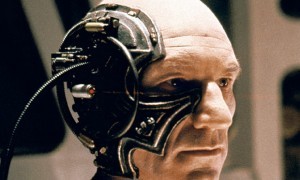
Ah, the exciting promise of Star Trek technology!

October 14, 2015
One more werewolf title
So, just saw this post at Black Gate, about Dean Koontz’s A WEREWOLF AMONG US, which I’ve never heard of.
It’s an SF / mystery with werewolves, evidently.
The main character is Baker St. Cyr (I smile at the connection to Sherlock Holmes), a cyber-detective who wears a vest-like bio-computer that helps him in his investigations and offers some psych- and dream-analysis to the troubled St. Cyr, who suffers from recurring nightmares. According to the bio-computer, St. Cyr is suffering from paranoia and fears that the symbiote is really a parasite, feeding off him, controlling his thoughts and emotions; at times it does seem that the bio-computer is a drug to which the detective is addicted…. The interplay between man and computer is often interesting and amusing, for the machine acts like his conscience, his overseer, and the second half of his personality.
Hmm.
Actually, the whole thing sounds a bit like a creepy version of the Liaden universe, with Korval replaced by the Alderbans and Jeeves replaced by Teddy, a “Master Unit Robot: a highly intelligent mechanical man that’s a cross between a butler, major domo, and guardian of the estate.”
Ah, I should just mention that I’ve been re-reading all the Liaden books this month and catching up on the ones I hadn’t read (about eight books, I think). But I don’t think I’m wrong. Creepy important family, creepy robot. Also a murder mystery and werewolves. Or possibly werewolves; I gather it’s not clear.
I did mention recently that I prefer Koontz to various other horror authors because I can trust Koontz not to kill my favorite characters. So here: A Koontz werewolf/SF/mystery story, in case any of you feel the same way. Looks like a collector’s item right now, but maybe it’ll be issued as an ebook one of these days.

Online critiques
So, at Bookview Cafe, a post by Ursula K LeGuin, asking whether online critique groups can be a good idea and how to make those work for you. Spoiler: she is skeptical.
I gather there’s now a widespread practice, via the Internet, of writers sharing their work in draft form with other people, who read it and respond with criticisms, opinions, and advice. … It worries me that so much of the reader-response cited in these questions doesn’t sound like the reaction of the normal fiction-reader . . . Do you consider it a good idea to offer your work in progress to numerous and/or unselected critics? If so, how do you decide which criticisms are valid and useful?
The responses are interesting, tending to pull in a couple different directions: comments that stick to the point (Do you offer your WIP to a large number of unselected critics? How do you judge the responses?), versus comments that address the use of a critique group in general.
Also, one commenter says “And if it makes you mad, you need to look deep inside and see if the comment was just cruel, or if it held some kernel of truth you didn’t want to face. If we’re really going to write about people who are not ourselves, then we’ll need to see the world (and occasionally our writing) through the eyes of others. Of course, it’s not an easy road, so I don’t recommend taking the step lightly…”
However, the problem LeGuin is addressing is not harsh criticism, but criticism that is off-base, vague, or otherwise useless.
The 11th comment, by Kate, begins like this:
I’ve tried all kinds of editors, beta-readers, first readers, and everything else with mixed results. As the length of my stories expands (and thus also the time to finish them), it’s tempting to look for encouragement from someone, so I consider sharing my draft.This usually doesn’t help me finish a story, and has actually stopped a few stories in their tracks. There seem to be a number of reasons for this. One is plain discouragement, if I get negative feedback. Another is discouragement if they point out a problem that I know will take a huge amount of editing to make the story work.
On the flip side, if I get excited and talk about my story with them, I sometimes feel as if I am done, and have no more desire to actually write the story down, because I’ve now shared it.
This sounds like me. I haven’t tried a lot of different kinds of editors, but I would expect to have exactly these problems with any critique group: discouragement due to negative feedback on the one hand; and on the other hand, smothering the story in the cradle due to too much sharing before writing.
There are a couple of commenters who feel differently, though. As always, different strategies will work for different writers.

October 13, 2015
Recent Viewing: The Martian
Well, I hardly remember the last time I went to the actual theater to see a movie. Hmm. The second Hobbit movie? I think that might have been it.
But . . . The Martian! It’s got all the scenery! So, yep, theater. Some notes about theaters:
1. People eating popcorn behind you are annoying. Even though I know this is a perfectly normal activity in a movie theater.
2. Given a wide open theater, someone will nevertheless decide to sit right in front of you. Why is that?
3. They sure show a lot of trailers before the actual movie, don’t they? I think at least six. The only one I remember the name of was Crimson Peak, which looked like absolutely not my thing because I really don’t like horror movies. You know, I really didn’t think a single one of the trailers actually looked like it’d be a movie I would want to see? That might be a first.
Okay, but! The Martian!
Really good job. They left out three disasters, I think. I’m re-reading the book now and I think it was three. But hey, trying to cram all that into just 2.25 hours is quite a trick. Stuff that I particularly noticed:
They started fast. This was a great decision. Let’s see, who was the director? Oh, Ridley Scott, Google tells me. Well, good job. It would have been thoroughly provoking if we’d had to sit through some kind of huge long prologue thing or a voice-over infodump or whatever. Nope. Right into the accident that stranded Mark, probably within the first minute of the movie.
They stuck to the book very nicely, even if they did leave out some of the disasters. I noticed even at the time (and now that I’m re-reading it’s even more obvious) that a ton of the dialogue and writing was conserved in the movie.
Good job with the NASA folks and the other people back home on Earth. There were some minor differences about how a couple of details were handled, but in fact I thought the movie’s tweaks were improvements on the book — at least the one I particularly noticed. It had to do with a particular interaction between Mitch and Teddy. Okay, and Rich Purcell was a really fun character. Lessee, all right, looks like he was played by Donald Glover (I don’t know actors hardly at all, so I have to look these things up).
They changed Venkat Kapoor’s name to Vincent Kapoor. I think that was a good idea, actually. On the page, Venkat is fine, but if you’re going to hear it, it’ll confuse the American ear and be distracting.
Good job with the Hermes crew. The tricks with the gravity looked persuasive to me.
Now: how does the movie actually compare to the book? Well, the book is better. I know, shocker, right? But for *me*, the book is better because I really did enjoy all the technological explanations in the book. Why did the airlock blow off the Hab? The book tells you why. In the movie, it just looks like a random disaster thrown in because the director just thought, Hey, let’s have a disaster. It’s true that I am just skimming some of the technical details on this re-read, but I am reading most of them and enjoying the extra depth of understanding. I could see that some people probably are enjoying the movie more because they honestly don’t care about the engineering and stuff.
Big question: so, could this movie be a big enough hit to kind of nudge the country back into an interest in space? Probably not, I guess, but we can hope…
Update: Here’s an interview with Andy Weir about the book and movie, over at a site called Curriculum Matters. I can totally see teachers of all kinds grabbing The Martian and using it to guide classroom assignments.

October 12, 2015
Werewolves: Horror or Paranormal?
So, moving on toward Halloween, seems like a good time to pose one of the important questions about monsters: Which is the best werewolf? The werewolf we see in the horror genre? Or the werewolf we see in paranormal/UF?
Or, wait, the werewolf in a spy thriller?
1. The Wolf’s Hour by Robert McCammon: Michael Gallatin is a master spy during World War II. He also happens to be a werewolf. He comes out of retirement for one last mission: to stop a secret Nazi operation called Iron Fist.
2. City Under the Moon by Hugh Sterbakov: “Bioweapon catastrophes, government conspiracies, military sieges, historical revelations, psychological warfare and werewolves. You want more thrill from a thriller?” On New Year’s Eve in Manhattan, a werewolf attack sparks an epidemic. Each night the victims multiply.
So, see, the first isn’t really horror, certainly not paranormal, it’s smack dab in the spy thriller genre. Not many werewolves in spy thrillers or detective novels or murder mysteries . . . are there? If you know of a good one, point it out, because it’s a trope that appeals to me. I can think of more vampires in this subsubgenre than werewolves. Anyway: McCammon’s book is certainly a werewolf classic.
The second title looks like a thriller, too — I haven’t read it, but it sounds like it fits in the thriller genre at least as much as the horror genre. Almost more like a zombie novel, really, with a plague of werewolves unleashed in Manhattan. The werewolves are both victims and menace, but the real bad guy is evidently the guy who unleashed the plague. Sounds like a pretty keen idea for a story.
Moving on:
3. The Wolfen by Whitley Streiber: The savage killing of two New York City policemen leads two detectives, a man and a woman bound together by a strange, tough passion, to hunt down the wolfen, called werewolves in former days.
4. The Howling by Gary Brandner: Karyn and her husband Roy came to the peaceful California village of Drago to escape the savagery of the city. On the surface, Drago appears to be like most small rural towns. But it is not.
5. The Cycle of the Werewolf by Stephen King: When the moon grows fat, a paralyzing fear sweeps through Tarker Mills. For snarls that sound like human words can be heard whining through the wind.
Here we have the horror werewolves. You get normal people trying to survive when they’re surrounded by monsters. The good guys are human and threatened, the werewolves are the bad guys and not the least bit sexy, the stories are horror stories using horror tropes, atmosphere, and plotting. These . . . are not really my thing. I didn’t ever pick up werewolf books until I suddenly found I was on a panel about werewolves at a convention some years ago, and then I read quite a few werewolf stories in a row, including a couple of the classic horror titles. Not the Stephen King one, though; I didn’t know about that one at the time.
And what I found out via this exercise was: I don’t really like horror werewolves. This is not a surprise, because honestly I am not too keen on horror generally. I have liked some Stephen King, but I prefer Dean Koontz, simply because with the latter you can be sure that your favorite characters will survive. He writes horror-light, so to speak, and I prefer that.
But what I also found out was that I greatly prefer the paranormal/UF werewolves, such as:
6. Moon Called by Patricia Briggs: Mercedes “Mercy” Thompson is a talented Volkswagen mechanic living in the Tri-Cities area of Washington. She also happens to be a walker, a magical being with the power to shift into a coyote at will. Mercy’s next-door neighbor is a werewolf. Her former boss is a gremlin. And she’s fixing a bus for a vampire.
7. Bitten by Kelly Armstrong: Elena Michaels is the world’s only female werewolf. And she’s tired of it. Tired of a life spent hiding and protecting, a life where her most important job is hunting down rogue werewolves.
Not my favorite series, but some of my favorite wolves. When Armstrong’s werewolves shift to their wolf form, they behave very much like real wolves rather than like the far-too-aggressive wolves or just-straight-up monsters of some writers
8. Tempting Danger by Eileen Wilks: Lily Yu is a San Diego police detective investigating a series of grisly murders that appear to be the work of a werewolf. To hunt down the killer, she must infiltrate the clans. Only one man can help her–a were named Rule Turner, a prince of the lupi.
I like some things about this series, but the insta-love compulsion thing is a hard sell for me and I’ve only read the first couple books. Still, lots of people love this series, so eventually I may go on with it.
Now, for something a bit different: neither horror nor SF (nor spy novel), we have —
9. Howling Mad by Peter David: Well, New Yorkers have seen their share of lunatics. But are they ready for a wild and weird man-wolf named Joshua who’s never heard of fastfood, cable TV, or that many-splendored thing called “dating?”
This one sounds like such a neat idea: a werewolf bites a wolf, who then turns into a man during the full moon. You may recall that Ilona Andrews did the same thing, but with a bouda (hyena), and in the backstory, not the actual story. Anyway, this one is very much a concept novel, meant to be lightly funny, I gather (I haven’t read it). Such a snazzy concept.
And, of course . . .
10. Black Dog
You saw that coming, didn’t you?

Literary Jack O Lanterns
Over at Book Riot, a delightful series of pictures of literary-themed Jack O Lanterns. If you have a minute, you should certainly click through.
The Calvin and Hobbes one is charming, though the scene depicted is not very Halloween-y.
The Beautiful Creatures one has a lovely font.
The Wizard of Oz is without question the most impressive carving job.
The Legend of Sleepy Hollow is my favorite.


